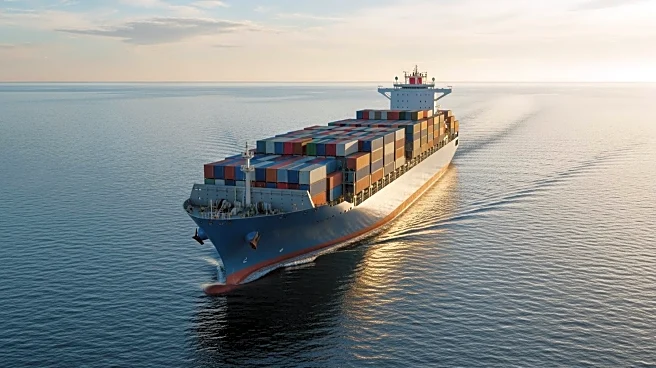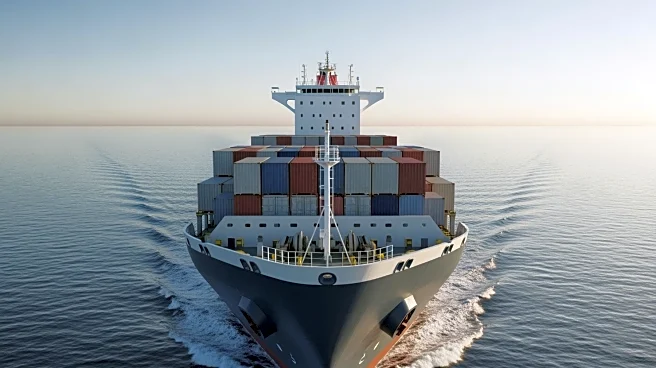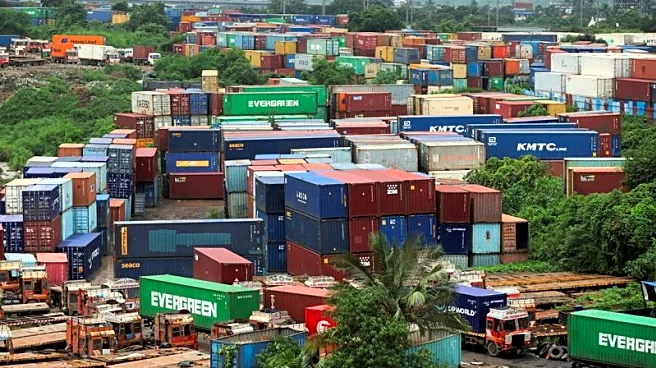What's Happening?
Blank sailings on China-U.S. trade routes have significantly decreased following months of volatility due to tariff changes. Data from project44 indicates an 82% drop in cancellations from April's peak,
as carriers adjust to new trade patterns and demand levels out. The reduction in blank sailings suggests that carriers have recalibrated their operations after importers rushed to move goods ahead of new tariffs earlier in the year.
Why It's Important?
The stabilization of China-U.S. trade routes is crucial for global supply chain efficiency and reliability. The previous spikes in blank sailings disrupted logistics and increased costs for importers and exporters. As carriers settle into new trade patterns, businesses can expect more predictable shipping schedules and reduced risk of supply chain disruptions. This development is particularly important for industries reliant on timely deliveries and consistent supply chain operations.
What's Next?
With the reduction in blank sailings, carriers and importers may focus on optimizing logistics and improving supply chain resilience. As tariff actions continue to influence trade dynamics, stakeholders will need to remain adaptable and responsive to changes in demand and regulatory environments. The ongoing adjustments in trade routes could lead to more strategic planning and investment in supply chain technologies.
Beyond the Headlines
The decrease in blank sailings highlights the impact of geopolitical factors on global trade and supply chain management. As businesses navigate these challenges, the importance of strategic planning and risk mitigation becomes increasingly evident. The stabilization of trade routes may also influence future trade agreements and regulatory policies.












